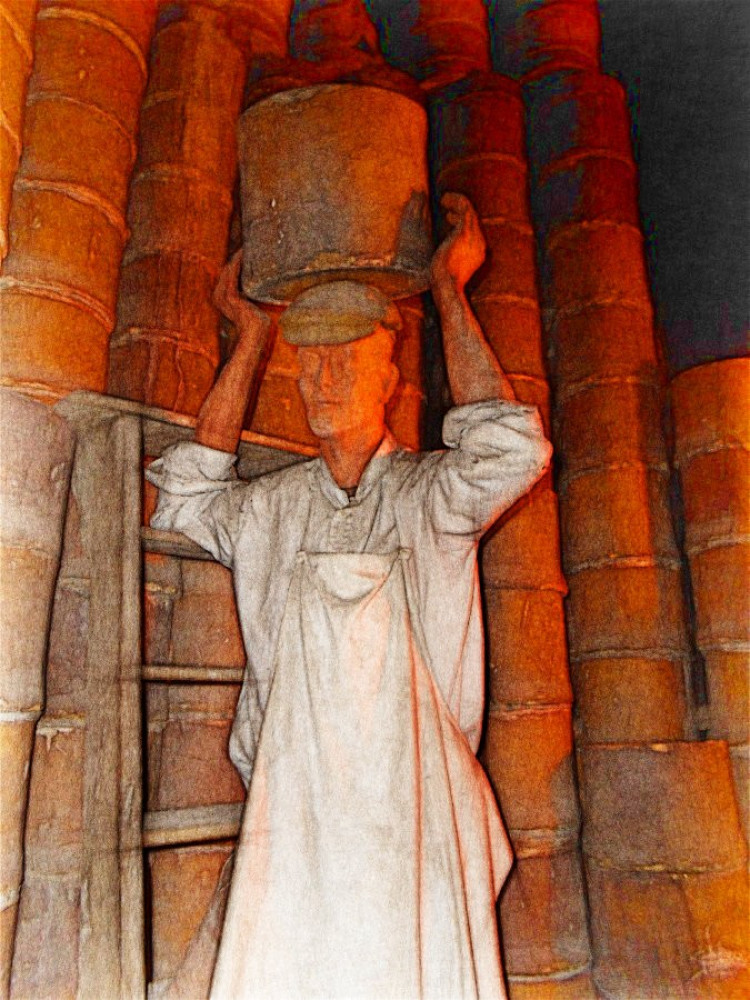Gladstone Revisited
By Kevin Raftery 9th Jan 2023
By Kevin Raftery 9th Jan 2023

Local people were more than upset with the closure of the award-winning/world class Gladstone Pottery Museum for five months of the year (closed on Saturday October 29th 2022). Apparently, when it does open in April, our museum will also have reduced opening times.
Put simply: the Gladstone is a nice place to be.
The food served at the museum is second to none; and you just know when you are dining in a clean, hygienic environment. The annual pass was/is also very good value for money.
It goes without saying that folk need to identify and relate to their local heritage, which can include idioms, phraseology and dialect – it is part of our cultural history.
Talking of dialect, I can remember a few choice Potteries phrases/words that even seasoned Stokies struggle to recall. The more obvious is Borsoned (fed up), but what about Mowgrums (mow as in lawn-grums)? This word would mean to pull face expressions to annoy someone. For example, I would say of a sibling: "Mum he's pulling funny mowgrums." As for phrases, one can recall 'cat lick' (not having a thorough wash) 'lather that face' (use soap) and if one did not, they could be goaded with: 'he's got a rim around his neck'.
Dialect is not the only means of identifying with our culture. The recent Clarice Cliff biopic The Colour Room, and the popular The Great Pottery Throwdown that have recently been filmed at the Gladstone Pottery Museum also contribute to the sense of who we are. Who remembers the 1970s drama, Clayhanger, which saw some scenes shot at the Gladstone Pottery Museum? Like the ripple effect, Clayhanger then motivates one to wonder as to why another series or even a feature film set in Victorian England cannot be filmed in the Potteries, considering authentic cinematic locations are showcased all around the museum.
A visit to the Gladstone is a humbling experience which enamours the local visitor with a sense of pride, in that the professional skills needed to display such an imaginative historical overview of our industrial heritage would be difficult to emulate even with unlimited finance. With regard to the displays, I find that the Gladstone is one of the few museums who fashion and project the stories of ordinary workers, which is sometimes missed by other museums – who, by and large, tend to focus only on the privileged. It also goes without saying that the museum also captivates Longton's intriguing industrial past.
One of my personal favourite elements presented at our Victorian factory is the pottery worker mannequin complete with saggar on head inner kiln – which is itself encased in the hovel (the bottle oven). In the 18th, 19th and 20th centuries the fierce heat fired by coal from the kilns was thought to be so unbearable it was a hellish existence for the Placers.

It goes without saying that the coal mining and pottery industries were inextricably linked.
The 'Casting Room' as I refer to it (a room with many casting blocks including a small bust of Catherine of Aragon) is also worth a visit. From this point one can head for the 'old office corridor' which leads to the colour visuals illustrating the different glazes for ware and exporting information.
Then we have display number 24, 'Flushed with Pride', which depicts ceramic bathroom fittings. While browsing the rooms, I was most impressed with past representations of the pottery industry (the ethereal Pig and Muck visual included). An unusual surprise also awaits the visitor in lieu. Last but not least, the evocative display number 21, The 'Doctor's House', which presents a Victorian doctor's surgery, is a viewing must. In the surgery itself, we learn about the many diseases local people were suffering from during this period (life expectancy was thirty-seven for the pottery workers in the mid to late 19th century). Potter's rot (silicosis) was interminably prevalent at this time where one symptom of the disease was coughing blood. Other common diseases were diphtheria, cholera and scarlet fever. Even the accents of the recorded local people describing their ails to the doctor are authentic. I personally, can actually envisage actors and actresses billing about the rooms costumed up, acting the part; ready for the next take.
In conclusion, one can categorically declare that North Staffordshire is ripe for a gritty production demonstrating the archetypal industrial callousness of the time. With the age of digital remastering, we could see more of our unforgiving, smoke billowing Potteries landscape of the day, simultaneously focusing in on real people.
Longton people that is.
CHECK OUT OUR FREE NEWSLETTER!
5 TOP STORIES EVERY FRIDAY!
Click here to sign up: stoke newsletter
Share:

























